Ding Liren, from China, was a convincing winner of the 2019 Grand Chess Tour, which reached its climax in London last weekend. The Grand Chess Tour Finals, a four-player knockout, was the flagship event at this year’s London Chess Classic. The match format was a blend of classical (slow), rapid and blitz games. Although the slower games held more weight in the scoring, the very inclusion of faster time limits reflects their increased status in the modern game.
The first semi-final, between Magnus Carlsen and Maxime Vachier-Lagrave, went to a tiebreak. The Frenchman won a topsy-turvy game in his beloved Najdorf Sicilian, as Carlsen went astray amid wild complications. In the second semi-final match Ding defeated Levon Aronian with a dominant performance in the rapid games.
Thus the final saw Ding pitted against Vachier-Lagrave. Ding let slip a big advantage in the first classical game, reluctantly settling for a perpetual check in an endgame where both players had two queens. But by winning the second classical game (see below), he took a commanding lead in the match. A masterpiece of strategic play, we see Ding’s queenside pressure induce a kingside counterattack which turns out to compromise Black’s own position. Ding’s positional squeeze, executed with profound patience, is swiftly transformed into a violent attack on the opposite side of the board.
A good performance in the rapid games clinched victory for Ding, along with a $150,000 prize. ‘It shows that when I am in my best shape, I can compete with anyone else,’ Ding said as he collected his trophy. The next big test for the 27-year-old will be the Candidates tournament in March 2020, which selects a challenger for the World Championship.
Ding Liren–Maxime Vachier-Lagrave
London Chess Classic GCT Finals
1 c4 c5 2 g3 g6 3 Bg2 Bg7 4 Nc3 Nc6 5 Nf3 e5 6 O-O Nge7 7 d3 d6 8 a3 a5 9 Rb1 O-O 10 b3 Rb8 11 Bb2 h6 12 Nd2 Be6 13 Nd5 b5 14 e3 Qd7 15 Re1 Bg4 16 Qc2 Rfc8 17 Ne4 A clever idea, threatening a fork on f6 to encourage the exchange on d5. 17…Nxd5 18 cxd5 Ne7 19 Nd2 Bh3 20 Bh1 Nf5 21 a4 Carving out a weakness in Black’s queenside. 21…h5 22 axb5 Rxb5 23 Ra1 h4 24 Bc3 Ra8 25 Ra4 Qd8 26 Bf3 Rab8 27 Rea1 Bh6 28 Re1 The rook returns to prevent a piece sacrifice on e3. White’s setup is so robust that there is no way to exploit this loss of time. 28 …Qg5 29 Ne4 Qd8 30 Ra3 Ne7 31 Nd2 Nf5 32 Qd1 A deep decision. Ding could have played 32 Nc4 and grabbed the pawn on a5. But first he shores up the kingside. 32 …Bg7 33 g4 Nh6 34 Kh1 f5 35 gxf5 gxf5 36 Rg1 Qd7 37 Qe2 Kh8 38 Ra4 A surprising switch. This rook is bound for the kingside! 38…Rxb3 38… Ng4 39 e4! undermines the knight’s defence. 39 Rxh4 Rxc3 40 Rxh3 a4 41 e4! (see diagram) I love this powerful little move, staking a claim to the kingside light squares. 41…Rc2 41… fxe4 42 Bg4! is an important intermezzo. 42 Rh5 f4 42…Rbb2 43 exf5! Rxd2 44 Qe3 and 45 Rxh6+ is unstoppable. 43 Qd1 Rbb2 44 Nc4 a3 45 Bg4 Qd8 46 Nxb2 Rxb2 47 Be6 a2 48 Rxg7! Accurately calculated. 48… Kxg7 Another pretty finish would be 48…Rb1 49 Rg1! Qf8 (to defend h6) 50 Qg4 a1=Q 51 Rxh6+ Qxh6 52 Qg8 mate. 49 Qg1+ Kf8 50 Rf5+ Black resigns 50…Nxf5 51 Qg8+ and mate follows.
Got something to add? Join the discussion and comment below.
Get 10 issues for just $10
Subscribe to The Spectator Australia today for the next 10 magazine issues, plus full online access, for just $10.
You might disagree with half of it, but you’ll enjoy reading all of it. Try your first month for free, then just $2 a week for the remainder of your first year.

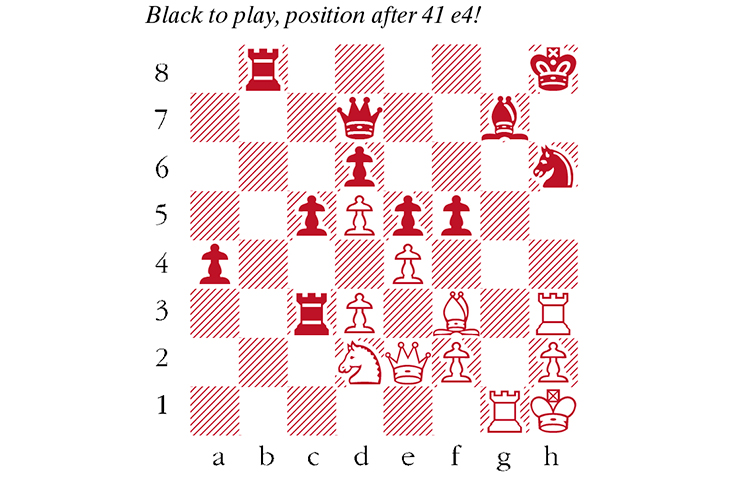

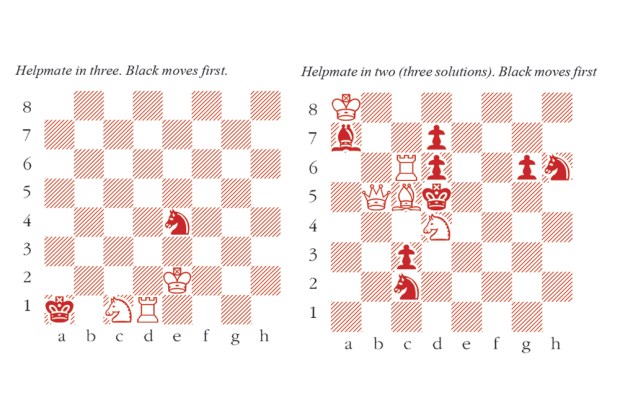
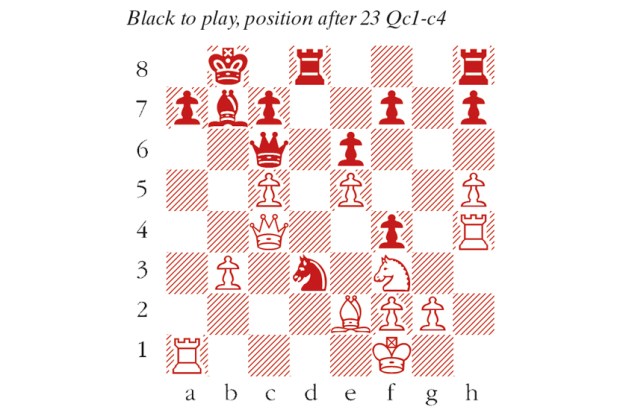
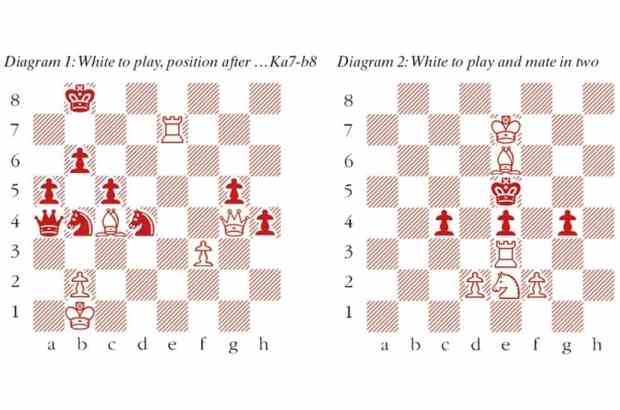
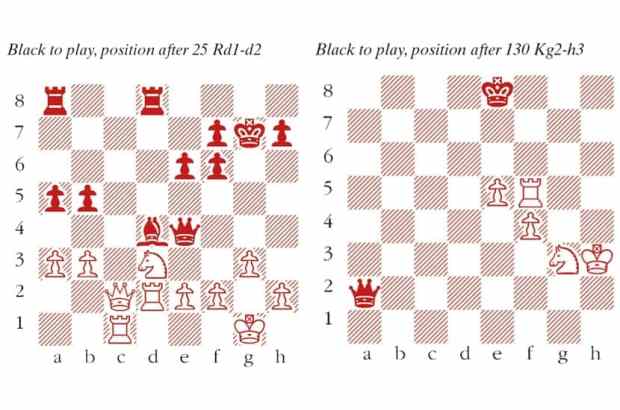
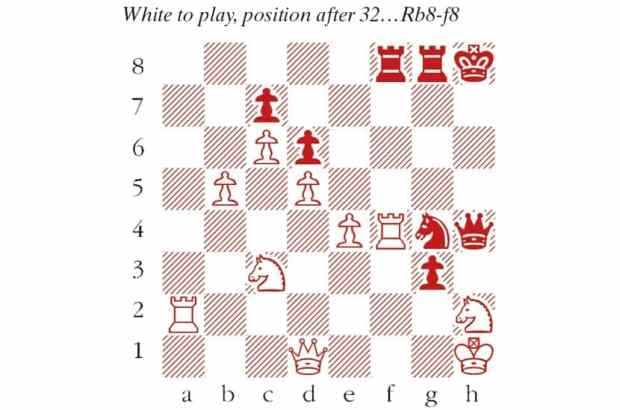






Comments
Don't miss out
Join the conversation with other Spectator Australia readers. Subscribe to leave a comment.
SUBSCRIBEAlready a subscriber? Log in